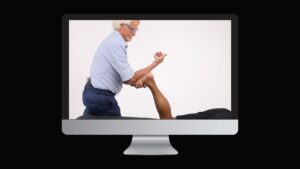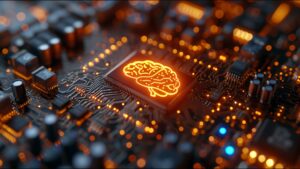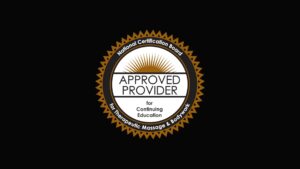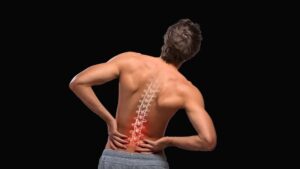The femoral nerve is one of the largest and most important nerves in the leg. Arising from the lumbar spine (L2–L4), it travels through the pelvis and into the front of the thigh, where its branches supply sensation to the upper thigh and motor control to the quadriceps muscles (Figure 1). These muscles are essential for extending the knee and supporting weight during walking, running, or climbing stairs.
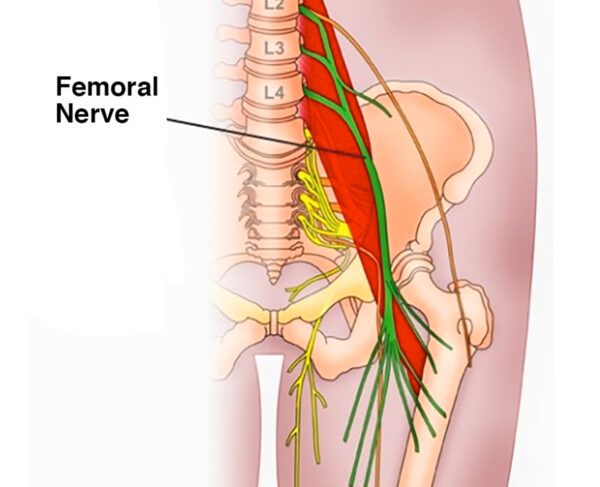
When the femoral nerve becomes compressed or irritated, the results can be both painful and disabling. Clients may report numbness, tingling, or shooting pain down the thigh, sometimes radiating into the groin. Weakness in the quadriceps is common and, in severe cases, the knee may give way unexpectedly. Such symptoms typically arise from direct trauma, prolonged external pressure on the nerve, or entrapment by surrounding musculature. In some cases, femoral neuropathy may be linked to lumbar spine pathology at its origin.
If compression is the underlying problem, the primary therapeutic goal is to relieve it. Manual therapy can play a valuable role by addressing soft-tissue restrictions that may be entrapping the nerve. Soft-tissue mobilization around the iliacus, psoas, and inguinal ligament area can free space for the nerve, followed by gentle nerve mobilization to restore its ability to glide. Although research on soft-tissue techniques for femoral nerve entrapments is limited, clinicians consistently report that such methods can improve range of motion, decrease pain, reduce swelling, and enhance muscle performance.
Stretching and strengthening also support recovery. Graded exposure stretching, performed either actively by the client or passively by the therapist, can help restore mobility and reduce nerve irritation, particularly when femoral compression stems from lumbar spine dysfunction or muscular entrapment. It is important that stretching be progressive and controlled, since aggressive movements may inflame rather than relieve symptoms. Strengthening exercises that stabilize the lumbosacral spine, pelvis, and hip are equally critical. By improving load transfer across these regions, therapists can reduce stress on vulnerable tissues and promote long-term function.
Aerobic conditioning further supports pain management by improving circulation and modulating the nervous system’s sensitivity to pain. For clients with chronic pelvic pain, gentle pelvic floor strengthening can restore muscular balance without aggravating symptoms. Cognitive-behavioral education may also be useful, helping clients understand how nerve pain develops and giving them strategies to cope with flare-ups.
Femoral Nerve Mobilization (L2- L4) Left Side Lying
ACTION:
- The client uses both hands to pull the bottom knee towards their chest.
- The therapist’s left hand grasps client’s right ankle and right hand grasps client’s knee
- The therapist steps behind client’s knee as it is brought into flexion
- With the therapist’s right hand on client’s knee and left hand securing client’s ankle, the therapist can create knee flexion or hip extension
- The therapist gently extends client’s hip to a painful femoral nerve barrier and backs off to the inter-barrier zone
- The client tucks their chin to traction the femoral nerve
- To floss the nerve distally, the therapist gently adds knee flexion as the client brings their head back to neutral
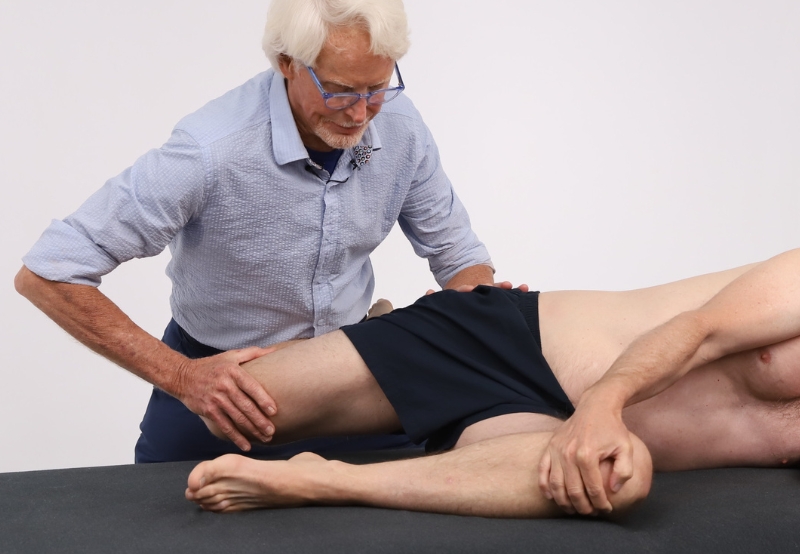
Femoral nerve entrapment is challenging, but with a careful combination of soft-tissue release, graded mobilization, strengthening, and education, massage and manual therapists can offer clients meaningful relief and improved quality of life.






